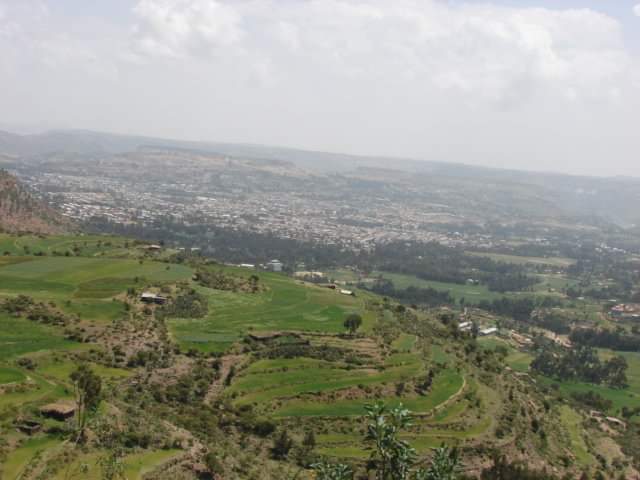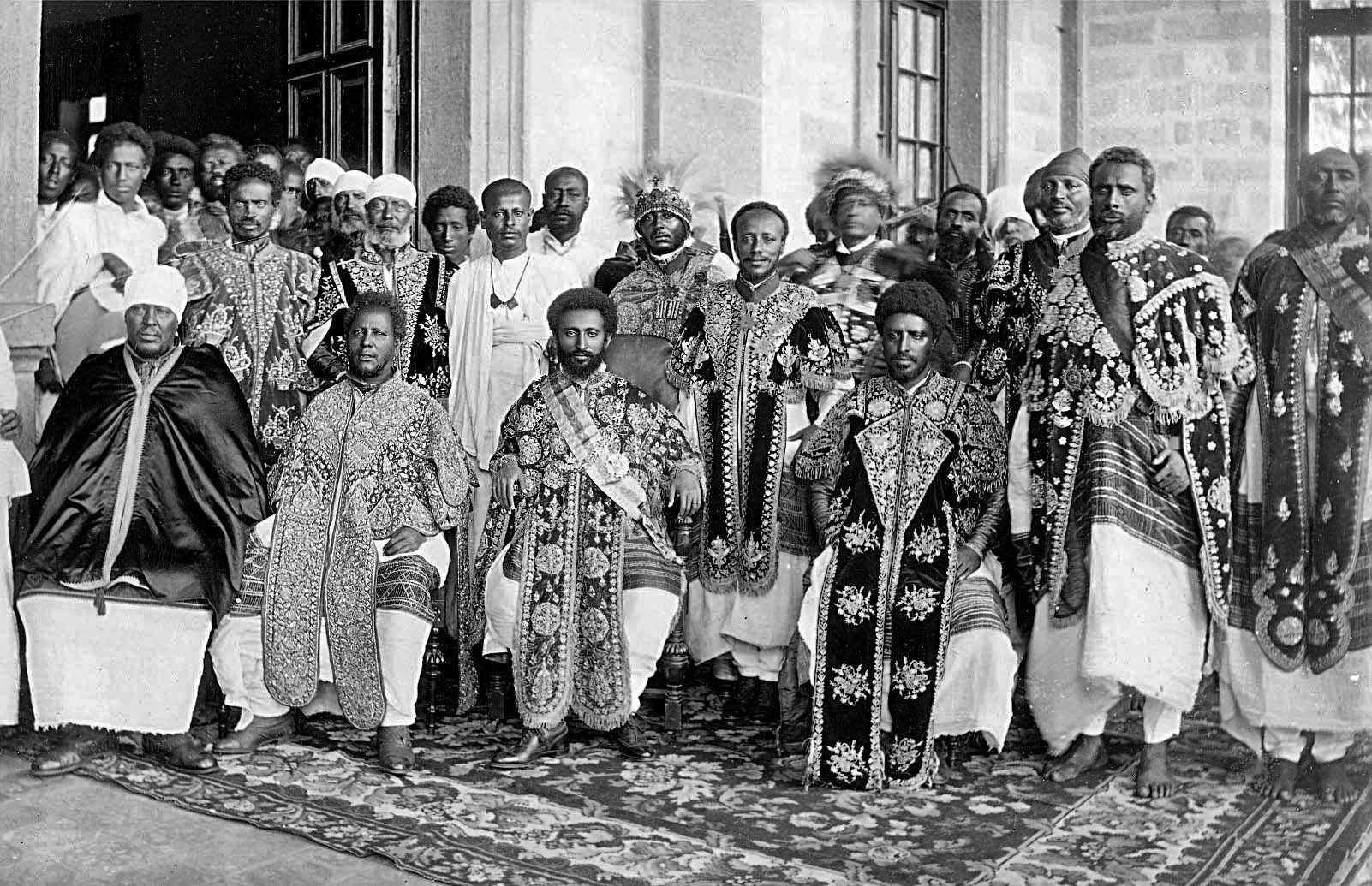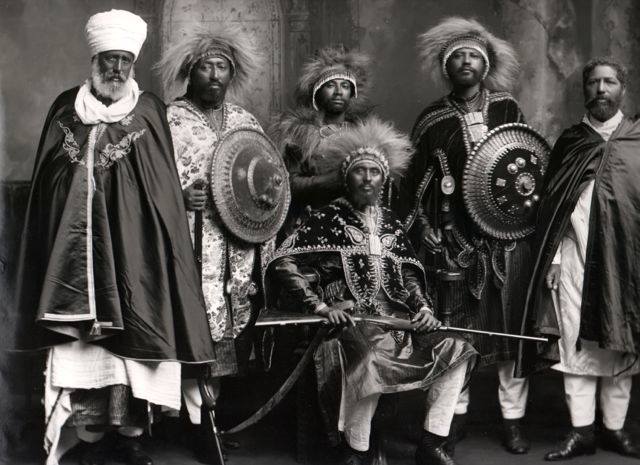|
Sabagadis
Sabagadis Woldu (; horse name: Abba Garray; baptismal name: Za-Manfas Qedus; 1780 – 1831) was a governor of Tigray Province of the Ethiopian Empire from 1822 to 1831. Sabagadis gained some notoriety in the first decade of the 19th century for rebelling a number of times against his overlord, '' Ras'' Wolde Selassie. But just before the death of Wolde Selassie it seems that he made up with his master and became one of his loyal lieutenants. Following Wolde Selassie's death in 1816, he defied the authority of Wolde Selassie's son, and became the most powerful warlord in Tigray. Making Adigrat his capital, he ruled Tigray and the coastal plains of Eritrea by 1818. His rule also extended to the Eritrean highlands ( Hamasien, Akele Guzay, and Seraye). Biography Early life Of Tigrayan & Irob descent, ''Dejazmatch'' Sabagadis was the son of '' Shum'' ''Agame'' Woldu Kumanit who ruled Agame from the late 18th to the early 19th centuries. ''Shum Agame'' Woldu's legacy was the a ... [...More Info...] [...Related Items...] OR: [Wikipedia] [Google] [Baidu] |
Wube Haile Maryam
Wube Haile Maryam of Semien, (1799 – 1867), also called by his title ''Dejazmach'' Wube, Webé; his name is also given in European sources as ‘‘Ubie’’, was one of the major figures of 19th century Ethiopia, during the closing decades of the Zemene Mesafint (lit: ''Era of the princes'') a period of regional lords vying for power, prestige and territory amid a weakened authority of the emperors. The regional ruler and ''Dejazmach'' of his hereditary province of Semien, and later as the overlord Tigrayan ruler of the Tigray Province and other coastal territories in what is now part of central Eritrea. Wube is remembered in Eritrea and Tigray for barbarous military raids. A major claimant to the Ethiopian throne during his era, Wube was defeated and imprisoned in 1855 by another contender Kassa Hailu, the future emperor Tewodros II. Some sources date Wube's defeat as the end of Ethiopia's Zemene Mesafint. He died in chains in 1867 Ancestry Of ethnic Amhara descent. Wu ... [...More Info...] [...Related Items...] OR: [Wikipedia] [Google] [Baidu] |
Agame
Agame () is a Provinces of Ethiopia, province in northern Ethiopia. It includes the northeastern corner of Tigray Region, Tigray, borders the Eritrean province of Akele Guzai in the north, Tembien Province, Tembien, Kilte Awulaelo, Kalatta Awlalo and Enderta province, Enderta in the south, and the Afar Region, Afar lowlands in the east. This province of Agame consists of the famous Debre Dammo monastery and the city of Adigrat. In pre-1991, Agame had a total area of about with an estimated population of 344,800. History 980 BC – 940 AD Agame is one of the oldest regions of Ethiopia, being part of the D'mt, Kingdom of D'mt in northern Ethiopia and Eritrea that would develop into the Kingdom of Aksum. It was a main center of Aksumite culture (second only to Central Tigray, where the capital was located), with a distinct sub-culture that separated the two regions from that of Central Tigray (Axum, Adwa, & Yeha), Central Eritrea (Provinces of Eritrea, Seraye, Hamasien, Akele Guzai ... [...More Info...] [...Related Items...] OR: [Wikipedia] [Google] [Baidu] |
Aregawi Sabagadis
Aregawi Sabagadis (, ''arägawi'' ''säbagadis''; d.1860) was a ''dejazmach'' (governor) of Agame from 1831 to 1859. Aregawi gained some fame in the 1840-50s for rebelling a number of times against ''dejazmach'' Wube Haile Mariam. Making Adigrat his capital, he ruled Agame and the surrounding areas by 1818. Aregawi opposed Catholic missionaries activities in Tigray. However, by the end of his rule, he developed diplomatic relations with the French consul in Massawa. Aregawi was the son of ''dejazmach'' Sabagadis Woldu Sabagadis Woldu (; horse name: Abba Garray; baptismal name: Za-Manfas Qedus; 1780 – 1831) was a governor of Tigray Province of the Ethiopian Empire from 1822 to 1831. Sabagadis gained some notoriety in the first decade of the 19th century for r ... and was the father of ''ras'' Sebhat Aregawi. References {{reflist Ethiopian nobility Adigrat Tigray Region People from Tigray Region 19th-century Ethiopian people ... [...More Info...] [...Related Items...] OR: [Wikipedia] [Google] [Baidu] |
Adigrat
Adigrat ( , ''ʿaddigrat'', also called ʿAddi Grat) is a city and separate Districts of Ethiopia, woreda in Tigray Region of Ethiopia. It is located in the Misraqawi Zone at longitude and latitude , with an elevation of above sea level and below a high ridge to the west. Adigrat is a strategically important gateway to Eritrea and the Red Sea. Adigrat was part of Ganta Afeshum woreda before a separate woreda was created for the city. Currently, Adigrat serves as the capital of the Eastern Tigray zone. Adigrat is one of the most important cities of Tigray, which evolved from earlier political centers and camps of regional governors. Antalo, Aläqot and Adigrat were a few of them. The decline of Antalo was followed by the rise of Adigrat as another prominent, yet short-lived, capital of Tigray. It used to serve as the capital of Agame. History Origins Tradition attributes the origin of the name Adigrat, which means "the country of farmland", to the then popular Tigrayan chief ... [...More Info...] [...Related Items...] OR: [Wikipedia] [Google] [Baidu] |
Tigray Province
Tigray Province (), also known as Tigre ( tigrē), was a historical province of northern Ethiopia that overlayed the present day Afar and Tigray regions. Akele Guzai borders with the Tigray province. It encompassed most of the territories of Tigrinya-speakers (and a few minority groups) in Ethiopia. Tigray was separated from the northern Tigrinya speaking territories by the Mareb River, now serving as the state border to Eritrea, bordering Amhara region in the south. The great majority of inhabitants were Orthodox Christians (95.5% in 1994), with the exception of a small, but important Muslim subgroup ( Jeberti) and a few Catholics (mainly Irob). Protestantism is only a very recent urban phenomenon. Despite a general impression of ethnic and cultural homogeneity, there were a few ethnic minorities, especially at the borders of Tigray, belonging to a non- Tigrinya groups, such as the Saho-speaking Irob at the north-eastern border to Eritrea, the people, Raya in the south-e ... [...More Info...] [...Related Items...] OR: [Wikipedia] [Google] [Baidu] |
Abuna Qerellos III
Qerellos III (Cyril) was an Abuna, or head of the Ethiopian Orthodox Tewahedo Church (1816 – 1828?). In the words of Richard Pankhurst, "A controversial figure, he is reputed to have been fanatical and rapacious." Background He came to Ethiopia 12 years after the death of the last effective Abuna, Yosab III, due to the efforts of '' Ras'' Wolde Selassie in the last year of the life of the ''Ras''. No sooner had he left Massawa than he sent forth a demand for a house in Chalacot belonging to Nathaniel Pearce, an Englishman then residing in the country, because the Abuna had heard it was the finest one in the realm. When Pearce refused to give up his home, Qerellos forbade all priests of the Ethiopian Church from providing communion until Pearce changed his mind. Only the efforts of Pearce's wife at last led the Englishman to surrender his house and home to the prelate. Pearce reported that shortly thereafter, Qerellos proclaimed that "every man wanting to be confirmed a priest ... [...More Info...] [...Related Items...] OR: [Wikipedia] [Google] [Baidu] |
Adwa
Adwa (; ; also spelled Adowa or Aduwa) is a town and separate woreda in Tigray Region, Ethiopia. It is best known as the community closest to the site of the 1896 Battle of Adwa, in which Ethiopian soldiers defeated Italian troops, thus being one of the few African nations to thwart European colonialism. Located in the Central Zone of the Tigray Region, Adwa has a longitude and latitude of , and an elevation of 1907 meters. Adwa is surrounded by Adwa woreda. Adwa is home to several notable churches: Adwa Enda-Gebri'el (built by Dejazmach Wolde Gebriel), Adwa Enda-Maryam (built by Ras Anda Haymanot), Adwa Edna-Medhane`Alem (built by Ras Sabagadis), Adwa Nigiste-Saba /Queen of Sheba secondary school, and Adwa Enda-Selasse. Near Adwa is Abba Garima Monastery, founded in the sixth century by one of the Nine Saints and known for its tenth century gospels. Also nearby is the village of Fremona, which had been the base of the 16th century Jesuits sent to convert Ethiopia ... [...More Info...] [...Related Items...] OR: [Wikipedia] [Google] [Baidu] |
Wolde Selassie
Wolde Selassie (; c.1736 – 28 May 1816) was Ras of the Tigray province between 1788 and 1816, and Regent of the Ethiopian Empire between 1797 and 1800. John J. Halls, in his ''Life and Correspondence of Henry Salt'', preserves a description of this powerful warlord, as "small in stature, and delicately formed, quick in his manner, with a shrewd expression, and considerable dignity in his deportment." Nathaniel Pearce also notes that Ras Wolde was an avid chess player, and "would play at from morning till night". Life Wolde Selassie, who descended from the nobility of Antalo in Enderta, emerged as the ruler of Tigray, Hamasien and Mareb Melash (Eritrea) after years of fighting; Nathaniel Pearce describes an encounter where he made a name for himself by single-handedly slaying the brothers Abel and Cail, "two of Ras Michael's choice men" who were sent by Michael to kill Wolde Selasse. Despite the fact ''Ras'' Mikael Sehul was so impressed at this act of bravery that he tried ... [...More Info...] [...Related Items...] OR: [Wikipedia] [Google] [Baidu] |
Akele Guzay
Akele Guzai ( Tigrinya: ምድረ ቡር) was a province in the interior of Eritrea until 1996, when the newly independent national government consolidated all provinces into the Northern Red Sea and Debub (Southern) regions. The province was bordered on the west by Seraye, Hamasien to the northwest, Tigray to the south and the Afar lowlands to the east. History Akkele Guzay is home to an inscriptional record going back to at least the 9th century BC, the earliest use of the Geʽez script. Akkele Guzay's name has been connected by some to the ''Gaze'' of the Monumentum Adulitanum (which later medieval Greek notes in the margins associate with the Aksumite people). If the note regarding the Gaze is accurate, it would connect the name of Akkele Guzay to the Ag`azyan or Agazi (i.e. Geʽez speakers). This connection has been rejected by linguists in modern times, however, due to the lack of the middle voiced pharyngeal fricative in the triliteral root, which is usually preserved ... [...More Info...] [...Related Items...] OR: [Wikipedia] [Google] [Baidu] |
Dejazmach
Until the end of the Ethiopian monarchy in 1974, there were two categories of nobility in Ethiopia and Eritrea. The Mesafint ( , modern transcription , singular መስፍን , modern , "prince"), the hereditary royal nobility, formed the upper echelon of the ruling class. The Mekwanint ( , modern , singular መኰንን , modern or , "officer") were the appointed nobles, often of humble birth, who formed the bulk of the aristocracy. Until the 20th century, the most powerful people at court were generally members of the ''Mekwanint'' appointed by the monarch, while regionally, the ''Mesafint'' enjoyed greater influence and power. Emperor Haile Selassie greatly curtailed the power of the ''Mesafint'' to the benefit of the ''Mekwanint'', who by then were essentially coterminous with the Ethiopian government. The ''Mekwanint'' were officials who had been granted specific offices in the Abyssinian government or court. Higher ranks from the title of ''Ras'' descending through to ''B ... [...More Info...] [...Related Items...] OR: [Wikipedia] [Google] [Baidu] |
Irob People
The Irob people (Geʽez: ኢሮብ ''ʾirōb'', also spelled Erob) are an ethnic group who live in a predominantly highland, mountainous area by the same name in Eritrea and Ethiopia. They speak the Saho language. Most of them profess the Catholic Christian religion and are mostly farmers. The etymology of the name Irob is debatable, but Irob's elders say that the term comes from the Saho word "Oroba", which means "welcome to our home". The boundaries of Irobland are, to an extent, identical to the Irob woreda; both are bordered by the following areas: Dabri-Mela to the north, Hado to the east, the Afar Region to the east and south, Shoumezana and Gulomakeda to the west, and Saesi Tsaedaemba to the south. The first two neighbors are Saho speakers and predominantly Muslim, the third are Muslim Afars, and the others are Tigrigna-speaking Christians. History The capital (traditional center) of Irob is Alitena. Irobs trace their lineage to one man, Summe, son of Neguse Worede-M ... [...More Info...] [...Related Items...] OR: [Wikipedia] [Google] [Baidu] |
Ethiopian Aristocratic And Court Titles
Until the end of the Ethiopian Empire, Ethiopian monarchy in 1974, there were two categories of nobility in Ethiopia and Eritrea. The Mesafint ( , modern transcription , singular መስፍን , modern , "prince"), the hereditary royal nobility, formed the upper echelon of the ruling class. The Mekwanint ( , modern , singular መኰንን , modern or , "officer") were the appointed nobles, often of humble birth, who formed the bulk of the aristocracy. Until the 20th century, the most powerful people at court were generally members of the ''Mekwanint'' appointed by the monarch, while regionally, the ''Mesafint'' enjoyed greater influence and power. Emperor Haile Selassie greatly curtailed the power of the ''Mesafint'' to the benefit of the ''Mekwanint'', who by then were essentially coterminous with the Ethiopian government. The ''Mekwanint'' were officials who had been granted specific offices in the Abyssinian government or court. Higher ranks from the title of ''Ras'' descendi ... [...More Info...] [...Related Items...] OR: [Wikipedia] [Google] [Baidu] |



